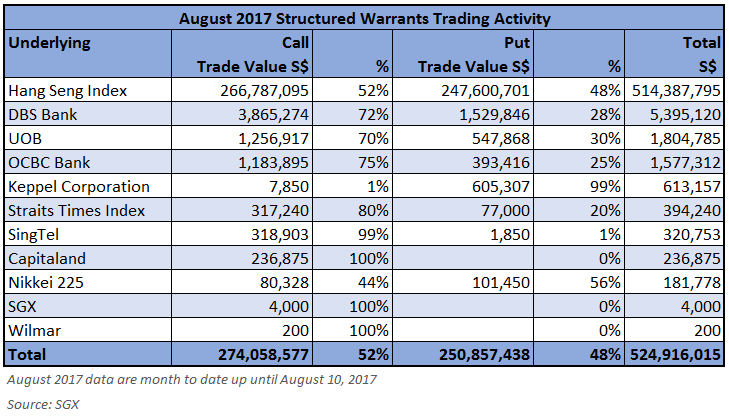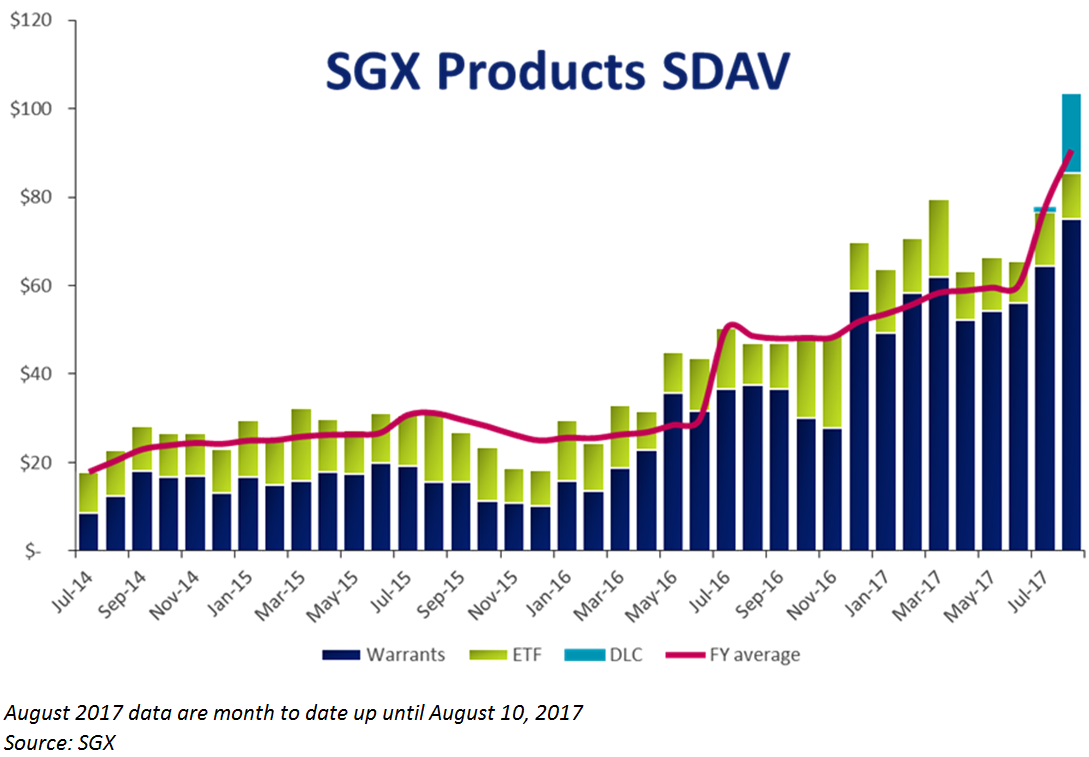The volume of structured warrants listed on the Singapore Exchange (SGX) reached a record level of S$160m (US$117m) on Thursday, August 10, marking a 10-year high in trading activity in the asset class.
"The possible reason is the high market quality provided by the issuer in terms of very competitive bids and asks in the products on our platform, especially by Macquarie and some increased volatility in the market," said Luuk Strijers (pictured), head of products, equities and fixed income at SGX. The drop of the Hang Seng Index on the morning of August 10 increased the retail investors' interest in buying calls, according to Strijers.

For the first seven trading days of August, the most traded warrants were linked to the Hang Seng Index, with calls slightly more popular than puts, with S$514m out of S$525m traded on the underlying, according to SGX. "Warrants on the Hang Seng have been the most traded on SGX over the past years," said Strijers.

The turnover in structured warrants for July 2017 was S$15.8bn, a 47% increase from the S$8.3bn in July 2016 and a 3% decreased from the S$16.4bn in June 2017, according to SGX.
SGX sees an increasing interest in all issued products tradable on its platform, including structured warrants, exchange-traded funds (ETFs) and daily leverage certificates (DLCs). "Structured warrants volumes, especially, have been growing significantly over the last year and peaking this month," he said.
"Furthermore, daily leverage certificates, which are our new first-in-Asia products on SGX, have had a good start since they were launched in mid-July, with the month-to-date average daily turnover reaching S$18 million," said Strijers. Investor interest in DLCs picked up on August 3 and August 7, when turnover reached S$50m and S$34m, respectively, according to SGX. Despite the "sufficient appetite" for this product, there is still a lot more that can be done to educate investors about its features, according to Strijers.
He also noted that "the percentage of leveraged products trading, as compared to the overall market turnover, has been growing from a 1-2% range peaking to 7% in August."
Regarding the three new ETFs that were recently listed on SGX, Strijers noted that their turnover is also increasing. In March 2017, Phillip Capital Management launched an Asia Pacific ex-Japan Reits ETF, which "is the first smart beta Reits ETF in the world, and its tracking index was constructed and calculated by SGX's own index service," according to Strijers. As of August 11, 2017, the ETF has reached S$33m in assets under management (AUM).
In March, Nikko Asset Management listed a Straits Trading Asia ex Japan Reit ETF with approximately S$54m in AUM, which has increased "to S$77m over the last four months," according to Strijers. In order to "promote further interest from Japan, Nikko has also launched a feeder vehicle on the Tokyo Stock Exchange in Japan, directly investing into the SGX primary listing", said Strijers.

In the first half of 2017, the One-Stoxx Asean Select Dividend Index Fund was listed, based on the Asean CIS framework. "The ETF tracks the Stoxx Asean Select Dividend 30 Index, which employs a smart-beta strategy to uncover the top 30 companies from six Asean countries based on dividend yield, excluding those with low tradability and poor dividend sustainability," said Strijers. As of August 11, the fund had reached S$12m in AUM, according to Strijers.
Related stories:
Warrants and CBBCs activity in the Asia-Pacific on the up
Leverage products are the 'missing category' on Asian exchanges, Societe Generale
Exchanges should seek balance between liquidity and product mix, SRP Apac
Index roundup: Machine learning and Artifical Intelligence on the horizon, SGX